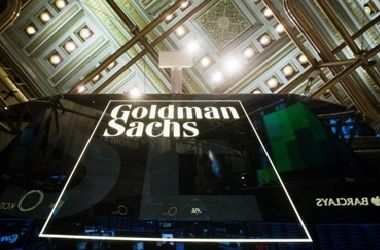Allegations that 12 of the world’s biggest banks conspired to control interest rate swaps markets from 2007 to 2015 intensified last week as further details regarding meetings and actions allegedly taken by banks to maintain their hold on swaps pricing were added to an existing lawsuit.
Lawyers for the Public School Teachers’ Pension and Retirement Fund of Chicago filed an amended complaint in US District Court last week that alleges banks refused to provide clearing services to any of their existing clients that tried to use upstart trading platforms looking to break into the swaps market.
Specifically, the complaint alleges that Goldman Sachs threatened to cut off all clearing services for its client NISA Investment Advisors if the large buyside fund continued attempting to trade through an all-to-all anonymous trading platform operated by Javelin Capital Markets.
“Goldman Sachs’ FCM was willing to forego clearing revenues and damage customer relationships in order to shut Javelin out of the market,” reads the amended complaint.
“There is no legitimate reason that a [bank clearer] should discriminate among [trading platforms] because its risk comes from the client trading entity itself, not the platform on which the trade is executed. The [bank clearer] earns a commission on every trade it clears.”
In another example given in the complaint, BNP Paribas is accused of threatening to pull clearing research and execution services for clients Annaly Capital Management and Mizuho Bank when the two firms executed a trade on upstart platform TeraExchange in the summer of 2013.
Spokespeople from BNPP and Goldman declined to comment.
The lawsuit alleges that banks made such threats as a means of ensuring the flow of trading activity remained centrally located at a few select trading platforms such as ICAP and Tradeweb, which did not offer all-to-all anonymous trading as the newcomers did.
By ensuring trading activity remained away from all-to-all anonymous platforms, banks could maintain control over pricing and earn exorbitant spreads on swaps activity, the complaint alleges.
“Collusive”
“Banks have been operating a collusive environment in interest rate swaps that allows for excessive fees in a subset of financial instruments that represent a huge portion of financial market activity,” said Jay Rehak, president of the board of trustees of the Chicago Teacher’s Fund.
“In this case we felt it was not just about re-couping the extra costs we and others had to pay because the market was not fair and open, but also about making sure this is a more just system for the rest of the market too.”
The details add fuel to broader allegations that banks and trading platforms have been manipulating derivatives markets over the last decade.
In addition to paying out massive settlements regarding manipulation of benchmark Libor rates, banks and trading platform ICAP have come under regulatory scrutiny for allegedly manipulating Libor’s sister rate, ISDAFix, to levels that would benefit the dealer community. Barclays paid US$115m to chief derivatives regulator the CFTC last May to settle such charges.
In September, the same 12 banks listed in the interest rate swaps lawsuit paid US$1.87bn to plaintiffs in an antitrust suit alleging that dealers conspired to keep new trading platforms out of the market for trading credit default swaps*.
The current interest rate swap lawsuit was originally filed in November. The additional details are the result of interviews conducted since then, according to the law firms representing the plaintiffs. The complaint also added Morgan Stanley and HSBC to the list of defendants from the original, and now includes the Mayor and City Council of Baltimore as plaintiff.
The defendant banks are required to respond publicly to the allegations by April 11.
* This sentence was changed to reflect the correct figure for the payment made to plaintiffs
